Transformed utterly, A terrible beauty is born.
I write it out in a verse-
MacDonagh and MacBride
And Connolly and Pearse
Now and in time to be,
Whereever green is worn,
Are changed, changed-utterly !
A terrible beauty is born.
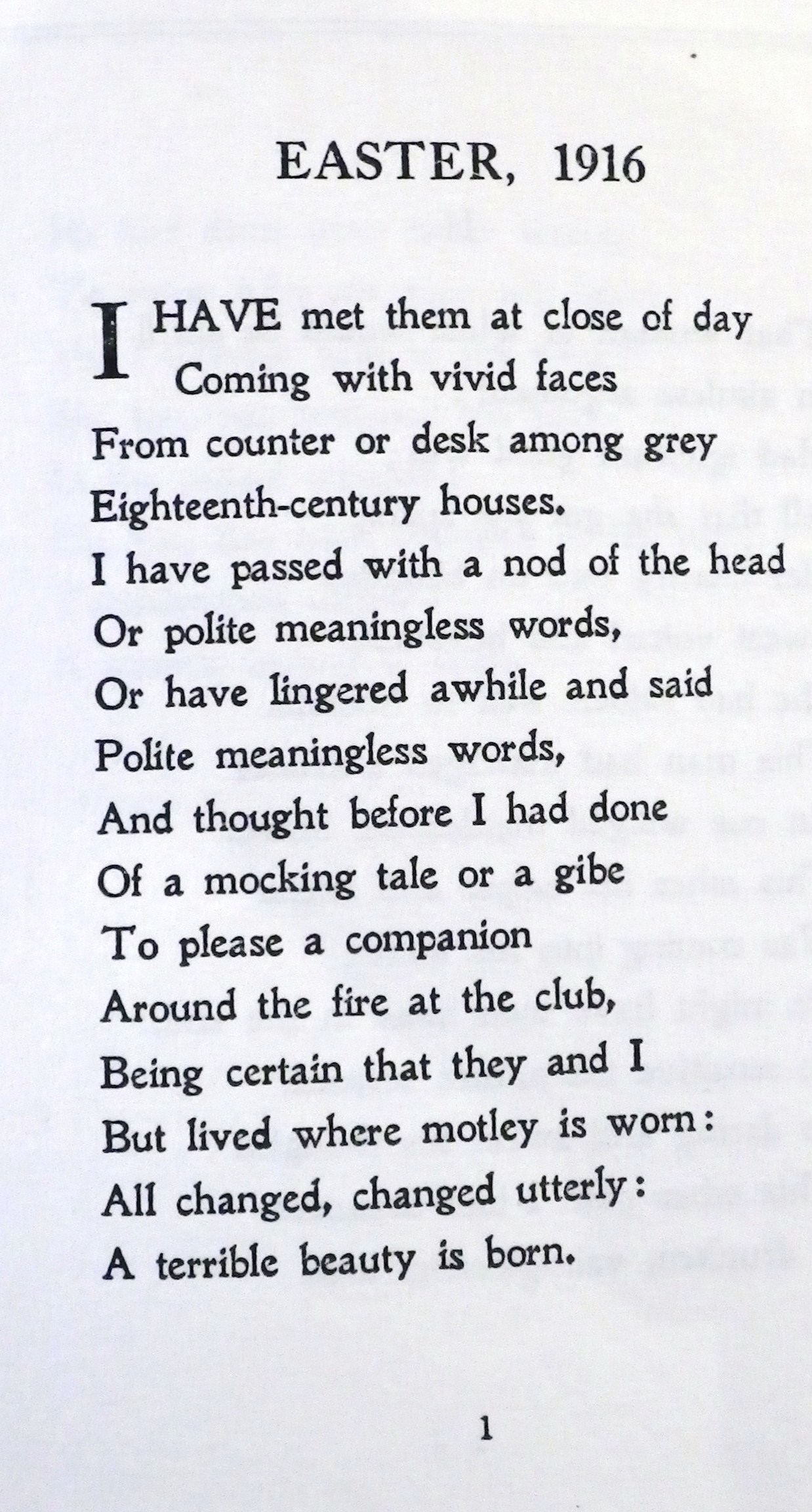
Transformed utterly, A terrible beauty is born.
I write it out in a verse-
MacDonagh and MacBride
And Connolly and Pearse
Now and in time to be,
Whereever green is worn,
Are changed, changed-utterly !
A terrible beauty is born.
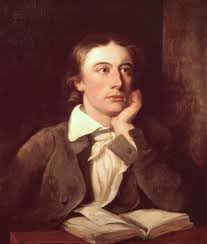
Keats delves into the complex emotions of grief, despair, and the consequences of deceit through Lamia’s subsequent transformation back into her serpent form. This symbolic act represents her loss of humanity, her shattered hopes, and her descent into isolation and exile. The poem concludes with Lamia crawling away into the wilderness, forever haunted by her unattainable desires. Beyond the tragic love story at its core, “Lamia” explores profound themes and ideas. Keats crafts a cautionary tale about the dangers of pursuing illusions and deceptive appearances. The poem questions the nature of reality, highlighting the fragile boundaries between truth and falsehood, appearance and essence.
Keats’ poetic language is rich with sensory imagery and vivid descriptions. He employs lush and evocative language to transport the reader into the mythical world of Lamia and Lycius. The poem’s structure and rhythm, characterized by its use of couplets and intricate rhyme schemes, add musicality and elegance to the narrative. “Lamia” exemplifies Keats’ ability to combine elements of mythology, romance, and tragedy into a cohesive and emotionally resonant work.
Also read: Summary and Analysis of The Legend of Good Women by Geoffrey Chaucer
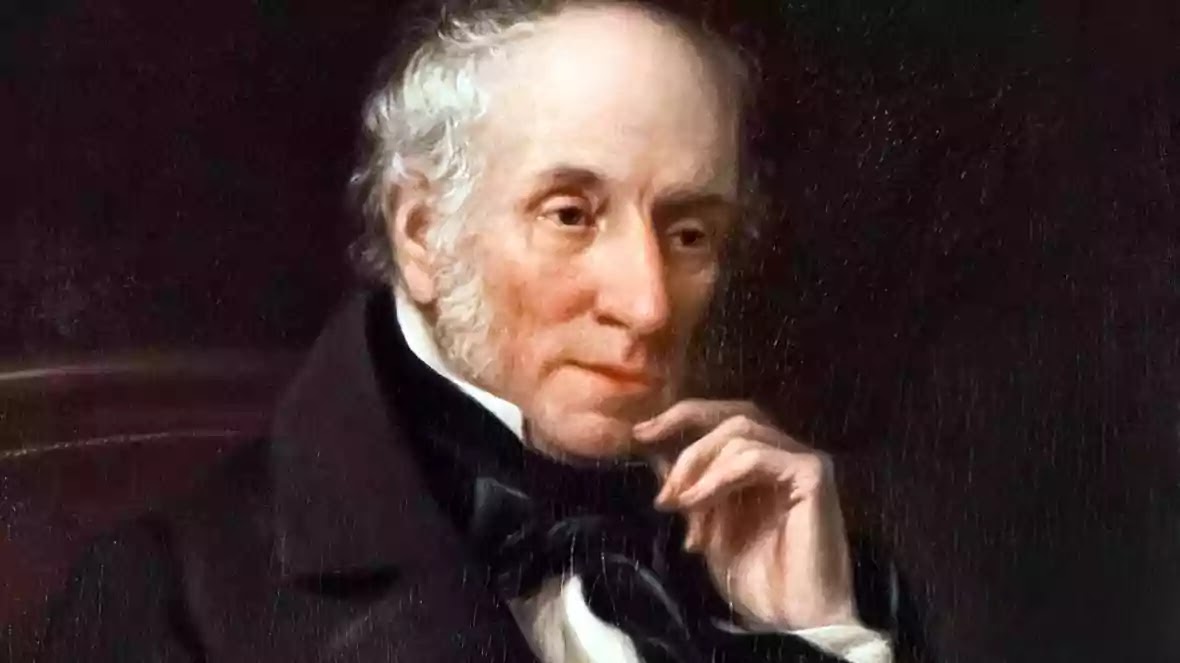
William Wordsworth’s sonnet On the Extinction of the Venice is a touching account of Venice in her days of glory and prosperity as also of wretched fall under Napoleon’s imperialistic lust. The first eight lines- the octave of the sonnet present the first aspect, while the sestet treats the second, and is an emotive expression of the sad decline of the city.
Wordsworth first dwells on what Venice once was. Venice was then possessed of power and prosperity. He personifies Venice as a maiden, bright and fresh. He refers to the strength of the Republic to dominate the gorgeous eastern countries and to act as a bulwark for the security of the West. Venice, as a centre of liberty, remained high and dignified in Europe.
In his description, the poet calls this ‘a maiden city’, which was bright and free. He implies here the great heritage of the city as a place of unassailable freedom and asserts further that no force or fraud could violate or seduce that dignity of its freedom. Finally, the poet mentions the grand tradition of the city’s annual marriage to the Adriatic Sea. But all that belonged to the great past of Venice.
The sestet is about the present – the present fall and degeneration of Venice. The aggression of Napoleon ended the glory and the liberty of Venice. The old Republic was ruthlessly crushed under the chariot wheels of a cruel conqueror. The sestet feelsingly refers to all that Venice lost – ’glories’, ‘titles’, and ‘strength’. The great Republic of the past was reduced to servitude under Napoleon. Venice could no more have all that once had made her great and glorious, and this is well echoed in the poet’s lament-
And what if she had seen those glories fade
Those titles vanish, and that strength decay
The poet feels impulsively, too, that all that is left is a sad memory of a grand past for which a regretful tribute needs to be paid in all sincerity. He admits that great Venice has no more its old splendour, honour, and power, but asserts that the extinction of that grand past under the tyrannical imperialistic design is a matter of deep grief for all human hearts-
Men are we, and must grieve, when even the shade
Of that which once was great is pass’d away.
Also read: Significance of the title of Far From the Madding Crowd by Thomas Hardy

Maud Gonne, the poet’s beloved woman, a staunch Irish revolutionist, is not named, but she is the only talked personality in the poem No Second Troy by W.B.Yeats. The woman (‘her’), referred to in the very first line of the poem, is Maud Gonne. She is the only character, mentioned and treated in the poem. The poem is based on the poet’s assessment of Maud Gonne, the woman he loved intensely. In fact, the entire poem, no doubt short enough, is related to her nature and function as the poet’s close associate and zealous organiser of the Irish uprising against the British occupation in Ireland.
The theme of the poem includes the power of Maud Gonne to attract and draw people, as she did to the poet and the poor ignorant Irish masses. At the sametime, she was hard and full of frenzy in her approach and attitude. She turned down ruthlessly the poet’s proposal, just as she incited ignorant simple Irish men to violent and thoughtlessly frenzied activities.
The poet also refers to Maud Gonne’s specific qualities that made her always restless, full of zeal and fury. Her mind, inspired with a pure selfless dedication to the cause of her homeland, made her restless and violently operative. Her beauty was strangely allied to sternness and her nature indicated her idealistic loftiness, commanding individuality and strong personality. She had an extraordinary character that was not natural to her time, full of tension and confusion, rich with a hig spirit and heroism.
The poem, in fact, centres round Maud Gonne, the poet’s much beloved woman, her nature and temperament, her role and function in public life and private. Of course, as indicated already, the poet is nowhere found to blame her for any reason whatsoever. Even he is frank in his admission of her power to create, like the rare Greek beauty, Helen, another devastating fire to burn down another great city, like Troy, if she could have such one-
“Why, what could she have done, being what she is?
Was there another Troy for her to burn.”
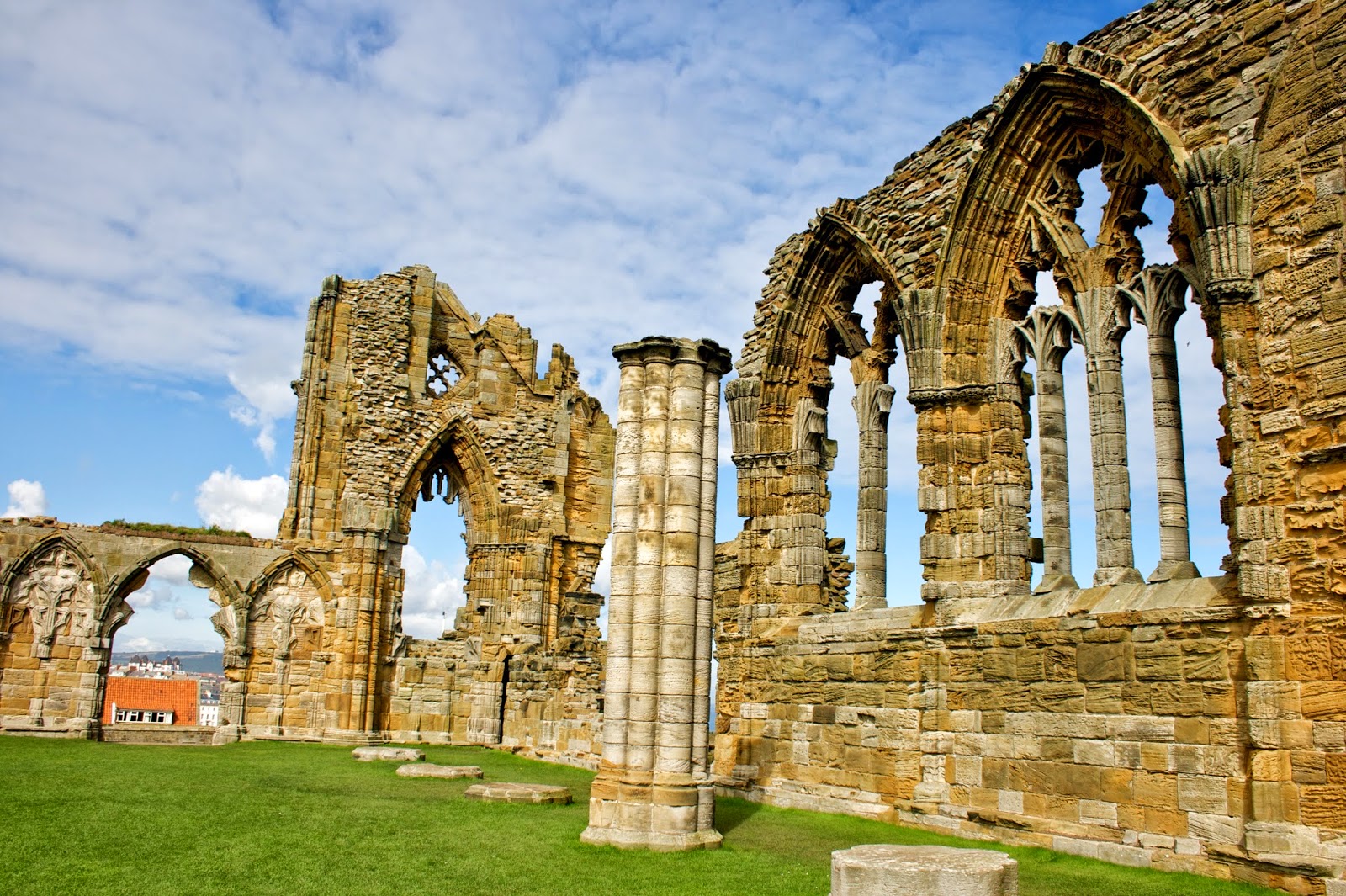
The Ruin or The Ruined Burg is usually claimed to be one of the most memorable productions of Anglo-Saxon poetic inspiration. It stands out as a most representative piece of Anglo-Saxon elegies, with a clear and pointed elegiac note. Of course, as an elegy, the poem’s character differs from what is seen in other elegies. It mourns not the misfortune of a person, but of a place, not for the death of a person loved, but for the ruin of a place with a nostalgic ardour.
The poem’s subject matter is the lamentation of the unknown Anglo-Saxon poet for the vanished glory of a great city, the ruins of which stand before him. The city referred to is probably the Roman-built city of Bath, which is the place of action for Sheridan’s famous comedy ‘The Rivals‘. Bath was once the centre of fashion and attraction, and enjoyed an immense glory and popularity in the days of the mighty Romans. But the Anglo-Saxon aggression, conquest and settlement brought about the utter ruins of the city and left behind simply a bitter memory of a grand past. The Anglo-Saxon poet of ‘The Ruin‘ laments impulsively over the end of that glorious city of the past. First, he describes the ancient gorgeous buildings, now deserted and turned roofless and tottering. Next, he goes to muse on their great past, when they were richly adorned and crowded with noble princes and proud warriors. Finally, he makes out the sad contrast from the awful decline of the ruined city. He deeply mourns the loss of its pomp and splendour, crowd and noise, attraction and business. All these are gone forever. Nothing is left but the sad mutability of grandeur and magnificence, glory and colour, so ruthlessly changed by the ravages of time.
The clasp of earth and the clutch of the grave
Grip the proud builders, long perished and gone.
The Ruin or The Ruined Burg must be ranked with the finest pieces of Anglo-Saxon poetry. Its importance and influence can in no way be minimised or slighted. Its significance is noted in several ways. In the first place, it is an impressive elegy, and echoes the modern elegiac note that muses on the way of the world and its tragedy. In this respect, it may rightly be taken as the most primitive predecessor of Gray’s Elegy Written in a Country Churchyard, Shelley’s Adonais and Arnold’s The Scholar Gipsy.
In second place, The Ruin stands out as a personal poem. Its intensely personal tone and warmth of appeal may well be regarded as the earliest pattern of subjective lyric. Indeed, in the intensity of the poet’s emotion, imagination and sincerity, this is a rare piece in Anglo-Saxon poetry.
In the third place, thoroughly rich in descriptive details, it compares the past glory and the present degeneration of a renowned city. Again, the poem may well be taken as the earliest ancestor of Lord Byron’s Childe Harold’s Pilgrimage, which also institutes a penetrating comparison between Venice’s great past and her present state of decay and degeneration.
Also read: Summary and Analysis of the poem The Dream of the Rood
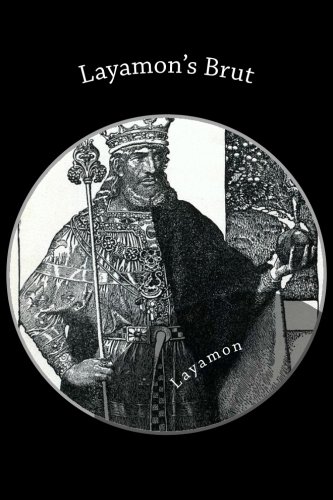
Layamon was an English poet of the late 12th century. His poem Brut is one of the chief sources of the matter of Britain in the metrical romances of the Middle Ages. He adapted this poem from the Latin work of Geoffrey of Monmouth. Geoffrey’s work is on the history of England, originally written in Latin. It contains a rich account of the old history and legends of the remote times of Britain. Geoffrey’s work was translated into French, and, of course, into rhyme, by a Norman, Wace. That work is popularly known as Wace’s Brut.
Layamon’s work is based on Wace’s Brut. It is a long poem, written in irregular alliterative verses, with materials, mainly taken from Geoffrey, with additions and alterations here and there. Layamon’s significance is immense in the English literature of the Middle English period. He is instrumental in reviving the interest in native materials for English literature. Although he translated the French rhyming version of Geoffrey into English, he added several things that had not been in the Latin original or the French translation. Those were obtained by the author himself independently, somehow or other, from the Welsh folklore and legends.
Layamon’s work, as already noted, has an essential bearing on the growth of Middle English literature. His addition is particularly of great worth. He introduced some matters relating to King Arthur, and here, the story of Arthur’s passing is especially worth mentioning. Layamon has offered immense materials for the growth of Arthurian literature in subsequent times. Both Thomas Malory and Alfred Lord Tennyson, celebrated names in Arthurian literature, are found to have derived materials from him.
Of course, Layamon’s work is not of a very high order from an artistic standpoint. His verse is not of rich quality, as he had no immediate literary model for his great enterprise to relate history in verses. The pattern before him was, perhaps, the old English alliterative verses and the rhyming French couplets, and he could not handle either of them with much poetical efficiency. As a result, his versification often appears disagreeable and discordant, heavy and prosaic, but his matter compensates for his poetical deficiency, and his treatment of past British history reveals both his scholarship and his creative imagination. The interest that he has created in his treatment of different stories from the remote history makes up for much of his uncomfortable verses and ranks him among the important forerunners of Middle English literature.
Also read: Summary and Analysis of the poem The Dream of the Rood
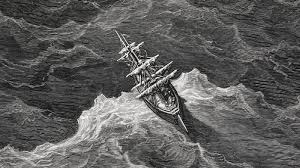
The Wedding-guest plays a vital role in the poem The Rime of the Ancient Mariner and makes the poem much more dramatic. Structurally, he reinforces the dramatic element. Thematically, he helps interpret two different kinds of reality- the reality of everyday common existence and the uncanny world.
The poem opens with an Ancient Mariner, with a long grey beard and glittering eyes, who stops one of the three guests on their way to a wedding feast and wants him to hear his story. The Wedding-Guest stands hypnotised and “cannot choose but hear.” The Mariner goes on with his tale. This wedding guest is reluctant to listen to the mariner’s extraordinary tale. He refuses to treat the story very seriously- at first. However, throughout this story, the guest pays more and more attention to the story. In The Rime of the Ancient Mariner, the wedding guest goes from an oblivious partier to a wise, solemn listener, believing the mariner’s tale, and at the end of the story learns a valuable lesson.
The wedding guest proves he listens to the story when he is worried the mariner is a ghost or spirit. As the mariner’s story gets to a more supernatural point, involving the incarnations of death and life-in-death, the guest becomes worried that the mariner is inhuman.
“I fear thee and thy glittering eye,
And thy skinny hand, so brown.”
The mariner responds, “Fear not, fear not, thou Wedding-Guest!/This body dropt not down.”. The wedding guest, however angry he was earlier, now proves he was paying attention by worrying that the mariner was actually a dead body reanimated, or a spirit, or some other supernatural being. This passage shows two things. First, it shows how the guest was listening and not just ignoring the tale. Second, it shows how the guest believes the mariner. After reassuring the wedding guest, the mariner moves on with his tale.
The ancient mariner and the Wedding-guest are complementary to each other. Towards the end of the poem, the Mariner says:
“I pass like night, from land to land :
I have strange power of speech :
That moment that his face I see,
I know the man that must hear me :
To him my tale I teach.”
Hence, the Wedding-guest is the mariner’s listener. Some critics have suggested that there is something of the Mariner in the composition of the Wedding-guest.
Towards the end of Part I, there is a slight change in the attitude of the Wedding-guest. He perceives the acute pain on the face of the mariner after he has killed the Albatross. He exclaims :
“God save thee, ancient Mariner :
From the fiends, that plague thee thus :
Why look’st thou so ?”
At this moment, the Mariner no longer remains an insolent, eccentric sea-farer, undesirably imposing himself on a stranger. Except for the above interruption, the Wedding-Guest does not interrupt the narrative of the Mariner. He suffers from the Mariner and learns what the Mariner has learned at such a terrible cost. The Ancient Mariner, before parting, tells the Wedding-Guest that “he prayeth well, who loveth well all things both great and small.”
After line 596, roles are reversed between the Mariner and the Wedding-Guest. Earlier, the Mariner had been experiencing alienation while the Wedding-Guest was going to attend a social gathering. But now the Mariner can enjoy the company. He died with the death of the Albatross, but the gush of love he showed for the water snakes led to his resurrection into a much larger brotherhood. The Mariner attains a complete reconciliation with God. But the Wedding-Guest, who was earlier fond of gay company, now withdraws into the loneliness of his inner self to ponder over the mystery of human existence and its real significance. He responds neither to the wedding bells nor to the little vesper bell.
Some critics believe that the Wedding-Guest is an ideal reader, responsive, apprehensive, and completely involved in what he hears. He has a refined and sharpened sensibility. He keenly feels and expresses what an ordinary reader might overlook. The reader can very well identify with the Wedding-Guest. The Wedding-Guest’s suspension of disbelief and the trust with which he accepts the tale helps the reader suspend his disbelief. Besides, he helps to relieve the monotony of what otherwise would have been a monologue.
Also read: Discuss “Sons and Lovers” as a Bildungsroman or Kunslerroman novel